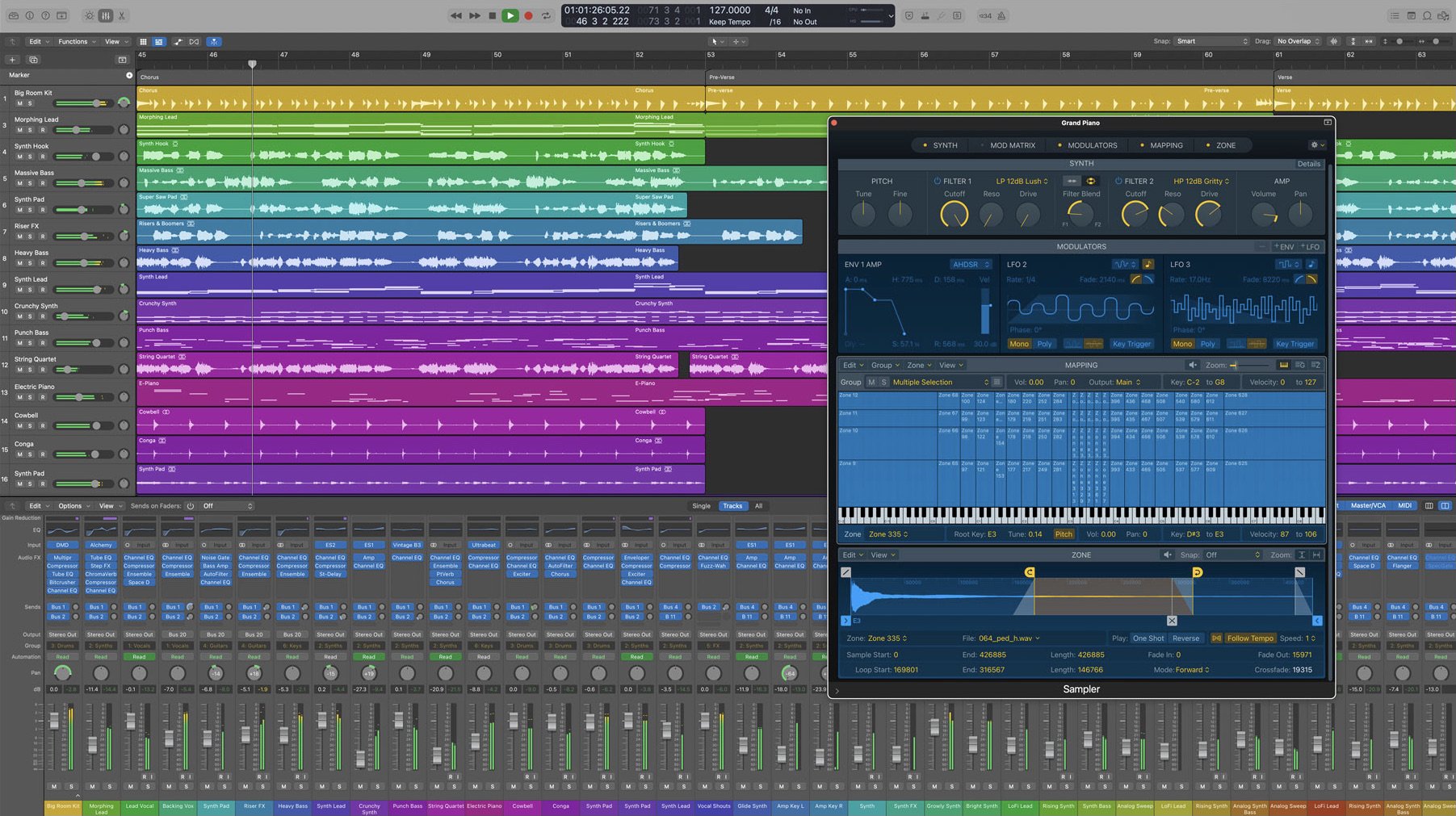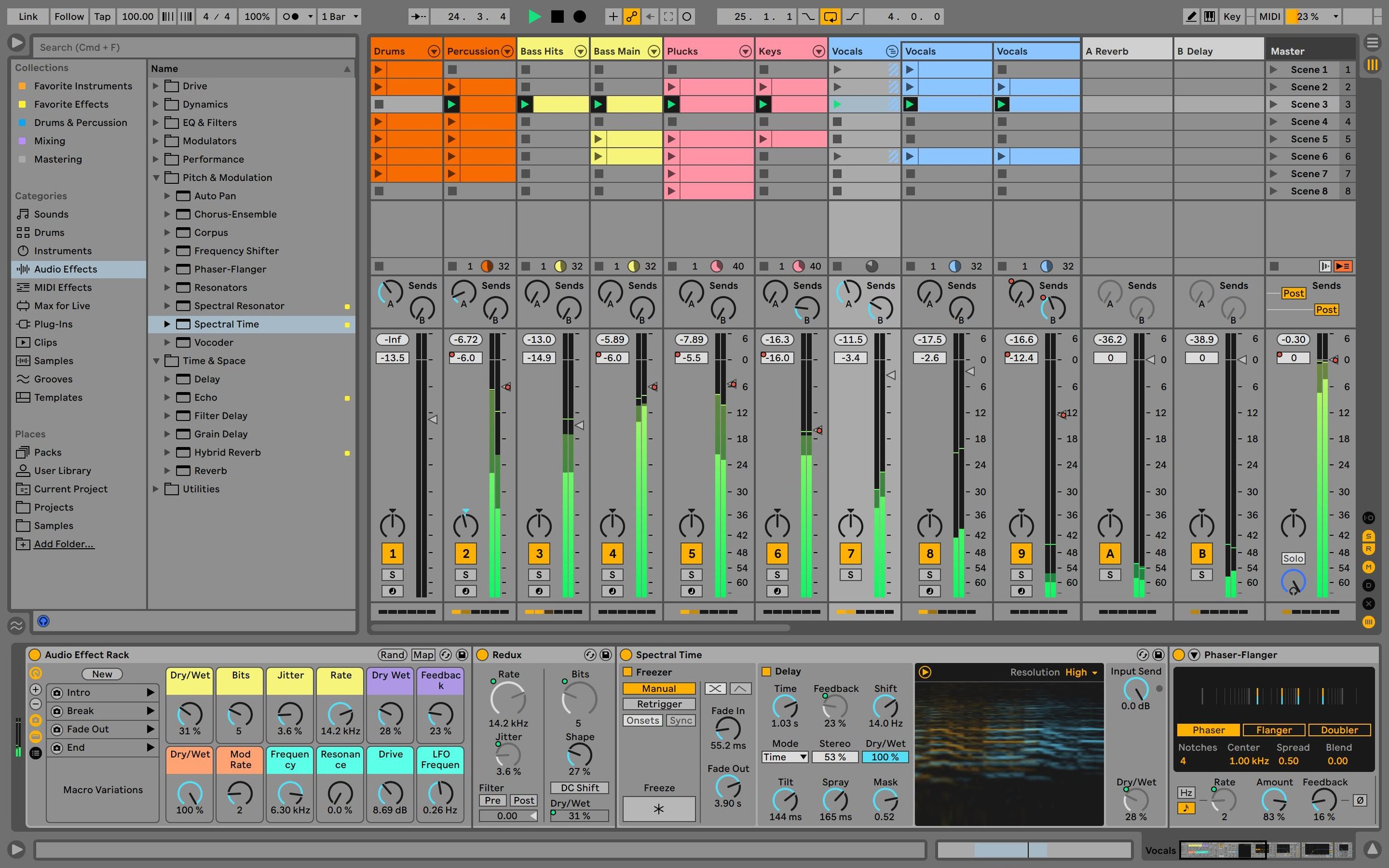Which DAW should you use?
So you want to get started creating and recording your own music. Fantastic! The more people bringing their music into creation the better, I say. Now you might have heard the term “DAW” being thrown around before and not be quite sure what it means. In this article we are going to look at just exactly what a DAW is and examples of some popular DAWs to get you headed in the right direction.
Digital Audio Workstation
Firstly, DAW stands for Digital Audio Workstation. This is a software program you can use on your device such as a computer, tablet or even a smartphone. It allows you to record, edit and export audio. Whether you’re a songwriter, producer, or just want to dip your toe in the world of music creation you are going to need a DAW. People often think you need a spec’d out computer to get started, but that’s really a myth. You can read the requirements for each DAW on the manufacturers website and you can see you don’t need much power or storage at all. You may have heard about the M1 Macs and how these chips are revolutionising computing power and battery life. My next computer will most certainly be an M1 Mac (or even M2) and so I have added whether or not each DAW is M1 compatible.
Best DAWs
Below is a summary of 4 different DAWs that I have used. It’s important to me to only write about softwares that I’ve had hands on experience with. One thing all these DAWs have in common is that you are able to just drag and drop the multitrack drums you get from Online Drum Studio straight into your DAW of choice. Sound good? Alright let’s get into it!
Logic Pro
I’m starting the list with my DAW of choice. Logic Pro (previously Logic Pro X) is Apple’s pro audio software and requires an Apple Mac to work. It’s not available on PC, or even iPad. That may be the deciding factor for many people, but if you already use a Mac then the benefits of integrating hardware and software from the same company is something to consider. This software is optimised well to run on Macs and doesn’t put as much load on the computer’s CPU as other DAWs. Logic Pro has been rumoured to be coming to iPad but we are yet to see this happen, if it ever does. In 2021 Logic Pro received it’s biggest update yet with the introduction of live looping (see Ableton Live), an improved step sequencer and improved plugins. The pricing is extremely reasonable considering you get unlimited tracks, a lifetime license and free updates. There is also a 90 day free trial available from the Logic Pro website.
Priced at £174.99 / $199.99
Pros
Well priced
Unbeatable integration with Macs
Powerful collection of plugins and features
Clean and friendly user interface
M1 Mac compatible
Cons
Only works on Mac
Ableton Live
Ableton is another DAW I own and sometimes use. Ableton Live 11 is the latest in the Live series and has a dedicated following of users. For a long time Session View was unique to Ableton, but now other DAWs (Logic Pro) offer something similar. Session View and live looping made this the software of choice for electronic producers and music makers. Ableton offers arguably the best sampler to enable users to chop up and create their own samples easily and effectively. There’s deep MIDI integration in Live 11 with the expanded MIDI recall feature as well as a whole host of powerful plugins. Ableton Live also features the insanely powerful Max for Live to create your own custom devices. There are 3 versions of Ableton to chose from as well as a 90 day free trial.
Priced at
Intro £69 / $99
Standard £319 / $449
Suite £539 / $749
Pros
Reasonable Intro pricing
Best in class MIDI integration
Powerful collection of plugins and features
Clean user interface
M1 Mac compatible
Cons
Expensive Standard and Suite pricing
Can be overwhelming for beginners
Pro Tools
It wouldn’t be a list of the best DAWs without Pro Tools. I purchased Pro Tools back in 2015 for my Accelerated Pro Tools class at Berklee College of Music. This is the industry standard DAW software and has held that title for a long time. Designed for use in a traditional recording studio, audio engineers swear by the software but it may well be overkill for a home studio. It has never been an affordable software but the recent move to a subscription based model has made it even more expensive than ever. With the monthly cost you do always get the latest version, but you are never done paying for the software. The pricing will most definitely be a barrier to some but there is also a (limited) free version called Pro Tools First which is a great way to test out the software without signing up for monthly payments. Pro Tools probably has the steepest learning curve of all the DAWs mentioned. If you have to use what the pros use, this is the one for you. There are 3 version of Pro Tools to choose from as well as a 30 day free trial.
Priced at (monthly)
Pro Tools | First £0 / $0
Pro Tools £30 / $29.99
Pro Tools | Ultimate £79 / $79.99
Pros
Most professional DAW
Free version available
Powerful collection of features
M1 Mac compatible (Big Sur or below)
Cons
Subscription pricing
Expensive
Steep learning curve
GarageBand
Last on the list is a DAW you may already have access to. GarageBand is another audio software made by Apple. It comes free with a hardware purchase so if you have a Mac, iPad or even an iPhone you should have GarageBand available to you. If you are unsure just have a quick search in the App Store and you should see the download button available. The cool thing about GarageBand is that it’s also available on iOS meaning you can use it on iPad and iPhone. This means you can have your portable studio with you in your pocket ready to go at a moments notice. GarageBand is often referred to as the “little brother” of Logic Pro. The 2 DAWs actually work extremely well together, you can start a project in GarageBand on your iPhone then transfer that project into Logic on your Mac. That’s quite impressive and means you can have a lot of fun playing with the two - you can even control GarageBand on your Mac from your iPad. Making music should be fun, and if you don’t want to be slowed down by a complicated DAW then GarageBand might be just the thing for you with a streamlined and simplified feature set.
Pros
Free on Apple devices
Clean and friendly user interface
Portable
Fun
M1 Mac compatible
Cons
Lacking pro features
Conclusion
So there we have it! Hopefully you now have a better understanding of what a DAW is, and which one would be best suited to your needs. I mentioned only 4 above to keep things nice and simple but some others worth mentioning are Studio One, Audacity, Cubase and Reaper. There really is an endless list so you’ve just got to decide on one, try it out and most importantly get creating!
If you chose to go with any of the mentioned DAWs you can help support the blog by using our affiliate links. Click the download icons to use our links.




